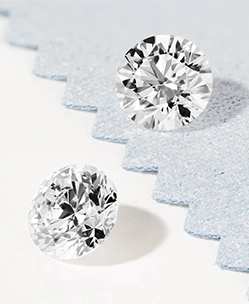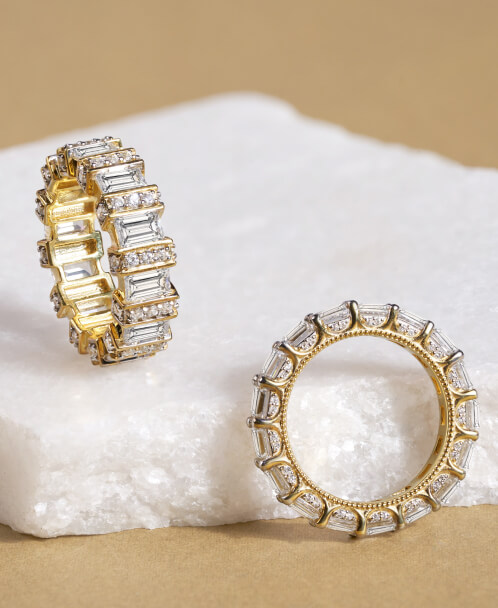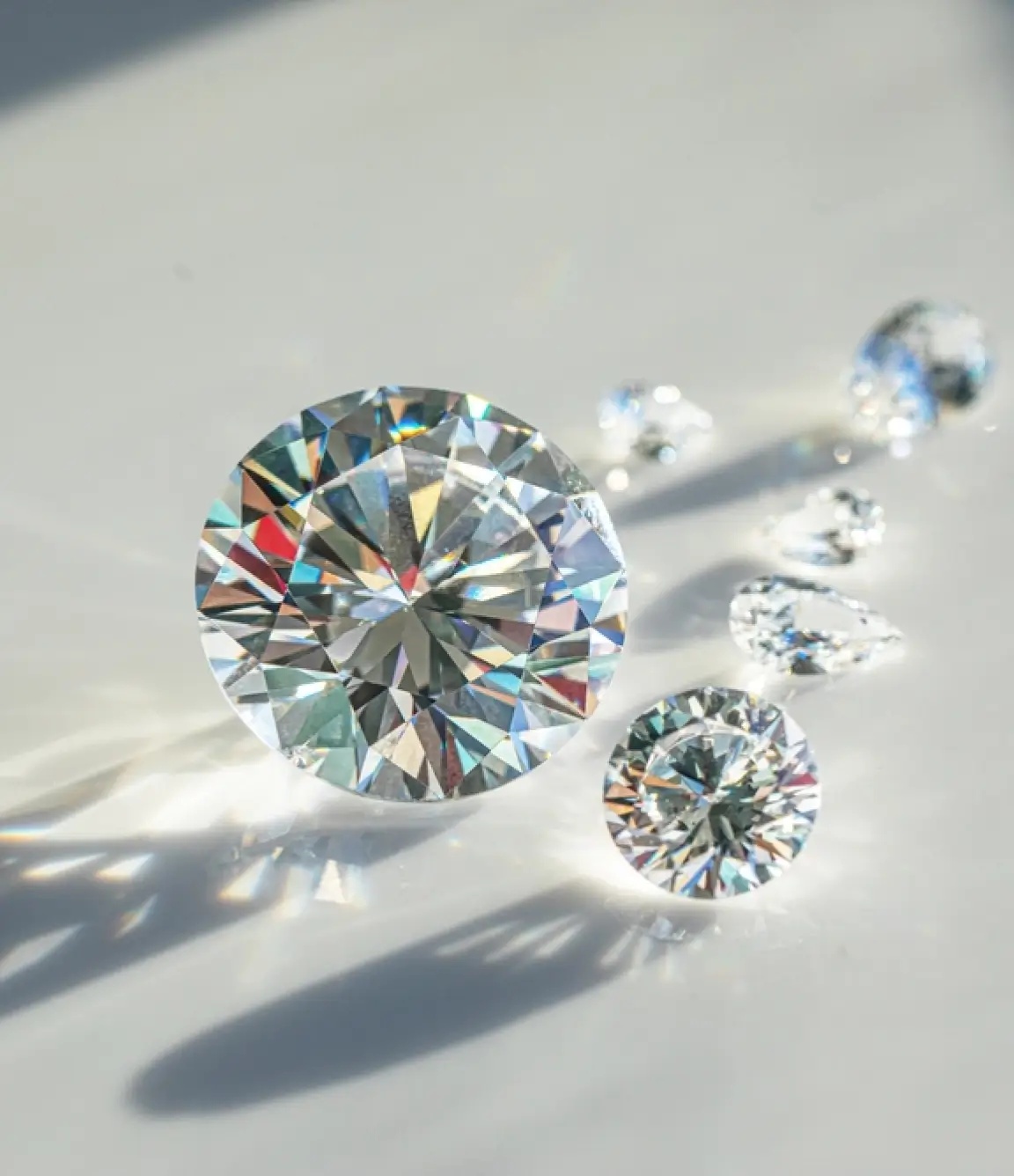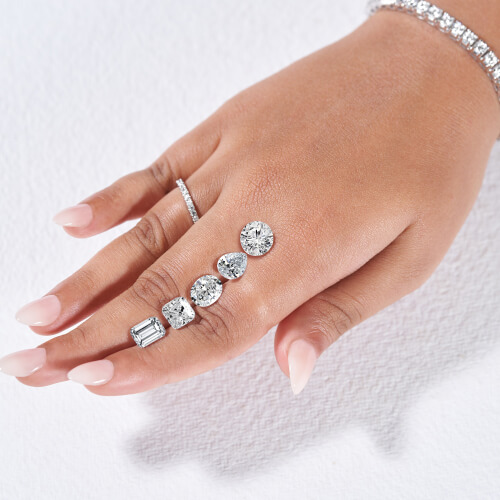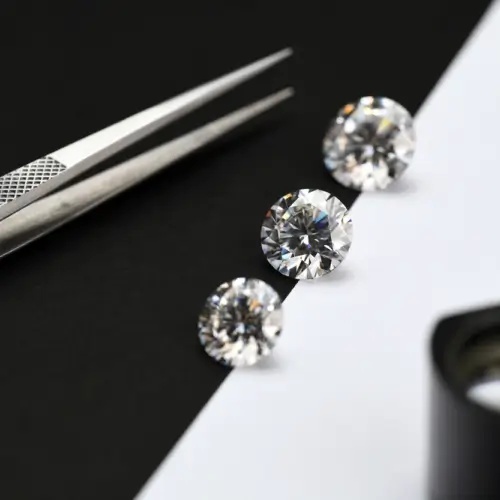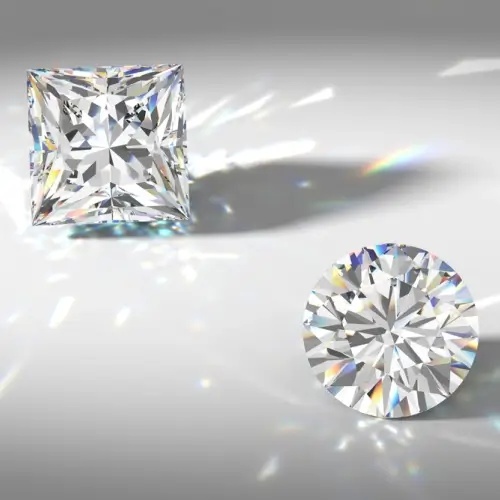Alan was so excited to buy a diamond engagement ring. He went to a jewelry shop and selected the most sparkly one. Trusting the seller's words, Alan purchased the ring, but only later did he find that the sparkly stone was a diamond simulant, which wasn't what he initially wanted. Alan simply wanted a genuine diamond, either mined or lab grown diamond. If he had been better informed, he would have chosen a lab diamond engagement ring, which would have satisfied his desire for a real diamond while also saving him money.
There is tons of information available on simulated diamonds and lab grown ones, which is often confusing and overwhelming. At first glance, the simulant diamonds and lab diamonds appear the same. However, both have broad differences from their creation processes to other features. Knowing these differences will help you in choosing the right one.
Here is a comprehensive guide on the differences between simulated diamonds and lab grown diamonds that will educate you and help you avoid the same disappointment Alan faced.
Table of Content:
Diamonds - The Element Supreme
Forged in the fiery chasm of the earth’s interiors, diamonds are one of the hardest and most beautiful materials nature produces. For billions of years, pure carbon has crystallized under extreme temperatures and pressure to form brilliant, sparkly diamonds. They are supreme elements of nature, for they are hard to break, extremely resistant to scratching, and very beautiful. The light refracting from a diamond provides a dazzling display of sparkle.
Natural diamonds are mined from the earth. They are excavated at a few locations and are rare and expensive. They are also associated with environmental degradation and ethical concerns like illegal mining, child labor, blood money, and smuggling. These concerns have led to the proliferation of alternatives - simulated diamonds and lab diamonds.

Simulant Diamonds - The Diamond-Adjacent
Simulant or simulated diamonds are man-made gemstones that are made to appear like diamonds but differ in their physical and chemical properties from a diamond. Their fiery rainbow sparkle clearly distinguishes them from a natural or lab diamond.
There are various types of simulant diamonds, but cubic zirconia (CZ) and moissanite are the two most popular diamond simulants. Both of these are created in labs through a scientific process.
Of the two, cubic zirconia is the most popular. Though it is available in nature, it occurs extremely rarely, and finding it is difficult. In the lab, it is created by heating zirconium oxide along with stabilizers to 5000° Fahrenheit. At that temperature, crystallization takes place, and synthetic diamonds are formed. The crystals are then cut and polished to resemble natural or lab diamonds. It is crucial to remember that both these diamond simulants are not real diamonds, and bear different properties compared to natural or lab grown diamonds.

Moissanite is also naturally occurring, but finding it is difficult. It was discovered by French scientist Henry Moissan in 1893. He discovered moissanite in a meteorite crater in Arizona and initially thought them to be diamonds. Later, he found that it was made of silicon carbide.
While creating these simulant diamonds in the laboratory, silicon carbide is subjected to extreme temperatures over several months, allowing it to grow into moissanite crystals. These crystals are later engineered to resemble diamonds.
Due to their lower production costs, simulated diamonds are the cheapest alternative to diamonds. But they have their drawbacks, and it all comes down to the consumer’s preference and budget when choosing the simulants.
Lab Diamonds - The Twin of Natural Diamonds
Invented in 1954, lab diamonds are the identical twins of nature-mined diamonds. They share similar characteristics like durability, chemical composition, and optical spectacle. They have the same refractive index and are indistinguishable to the naked eye. Even expert jewelers may not differentiate the two. Only laboratories with sophisticated equipment can tell the difference.
The lab diamonds are grown in controlled environments with high pressures and temperatures similar to the earth’s core. There are two popular methods to create them, popularly known as the HPHT and CVD methods.
In the HPHT (High Pressure High Temperature) production process, the temperatures and pressures of the earth’s interiors are recreated in a lab to produce diamonds in weeks or months, which take 1 to 3 billion years to form in nature.

The other method is CVD (Chemical Vapor Deposition), where a diamond seed is heated to over 1450° Fahrenheit along with a hydrocarbon gas mixture in a chamber. Then, the gas is ionized to create plasma, allowing diamonds to form.
Lab diamonds are less expensive than natural diamonds of comparable size and quality. Also, they are a sustainable choice as they have a lesser environmental footprint. Further, the ethicality of creating lab diamonds is not an issue, as they are produced under stringent regulations.
The Differences Between Simulant Diamonds and Lab Grown Diamonds
Both of these diamonds are gaining prominence among consumers. But there are differences between them that you should know before buying.
-
Material - Different materials, like silica, beryllium, aluminum oxide, magnesium oxide, etc., are used to create simulant diamonds. For creating a diamond in a lab, a tiny diamond seed and carbon are used to form pure carbon, similar to the natural diamond formation process.
-
Durability - On the Mohs Scale of Hardness, lab diamonds rank 10 - just like the natural ones. On the other hand, moissanite simulant diamond ranks 9.25, and cubic zirconia ranks 8.5. This shows that simulated diamonds are less durable than real diamonds.
-
Radiance - Simulant diamonds have excellent sparkle under the light due to their rainbow refraction. But over time, the shine disappears, unlike lab diamonds that carry the shine for eternity.
-
Grading - Lab diamonds are graded based on the 4 C’s - cut, clarity, carat, and color - similar to natural diamonds. Simulated diamonds, conversely, are graded only based on the size of the stone and whether they are premium or super premium.
-
Affordability - While lab grown diamonds are less expensive than natural mined diamonds, simulants are inexpensive compared to lab and natural diamonds.
-
Residual value - Even after regular usage, wear and tear, lab diamonds retain residual value, whereas diamond simulants have zero residual value.
7.Long Life - As simulated diamonds are synthetic crystals, they can last up to 3-5 years, while lab diamonds are eternal.
Some Similarities
There are a few similarities between lab grown and simulated diamonds.
-
Both lab grown and simulated diamonds are produced ethically and have less impact on the environment and the community.
-
They come in different colors, hues, and shapes that are customizable to fit different types of jewelry.
-
Both are good thermal conductors.

The Pros and Cons
Pros of Simulated Diamonds
-
Affordability is the major advantage of simulant diamonds. A lab diamond of 1 carat with clean clarity may cost you hundreds of dollars. A similar weight simulant may cost you less than $20.
-
They have a fiery brilliance with distinct refraction compared to lab diamonds.
-
These diamonds are easy to maintain. You do not need professionals to clean the stone.
Cons
-
Though simulant diamonds like cubic zirconia and moissanite have high ranks on the Mohs scale, they are susceptible to surface scratching, making them less useful as everyday jewelry.
-
They do not reflect the light like a lab diamond, giving a disco ball or rainbow effect.
Pros of Lab Diamonds
-
They are scratch-resistant and retain luster for a long time.
-
They have the same chemical, physical, and optical properties as natural diamonds and are true alternatives to real diamonds.
-
Lab diamonds are 30-40% cheaper than natural diamonds, very economical for high fashion enthusiasts.
-
They are the perfect choice for making luxurious jewelry.
Cons
-
Compared to natural diamonds, lab grown stones have less resale value.
-
For some, the idea of lab diamonds not being rare, like mined diamonds, can affect their decision to buy them.
Which Diamond Should I Buy?
The answer to the question depends on your lifestyle and budget. Moissanite or simulant diamonds will be the best choice if you want to buy diamond jewelry for occasional wear. However, if you prefer elegance, beauty, and luxury, make lab diamonds your primary choice.

SHOP LAB DIAMONDS
Lab diamonds give off a scintillating sparkle and last forever. At Friendly Diamonds, you can get certified and authentic lab diamonds at really pocket-friendly prices. You can also explore our finely crafted lab diamond jewelry and feel the difference of premium luxury.
For more detailed information about lab diamonds, feel free to contact us any time or book a free virtual appointment with our experts today!
